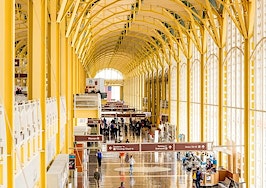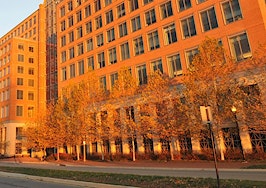- DC's Ward 7 and Ward 8 are plagued by various types of inequality.
- Incomes in the area are stagnant, or less than those earned by residents in 1980.
- The economic output of the entire DC area is significantly impacted by imbalance in Wards 7 and 8.
At a conference hosted by the City First Foundation, Leah Hendey, a research associate at the Urban Institute, shared sobering statistics about income, education and homeownership disparities in the District of Columbia.
Hendey recounted data pertaining to Wards 7 and 8, where the City First family of companies does a majority of its work. Those areas lag in development, business growth, income and high school graduation rates.
DC is burdened by extreme poverty. Family incomes in Ward 7 are stagnant. In Ward 8, despite a 54 percent citywide increase in average family income since 1980 (adjusted for inflation), family incomes are below 1980 levels.
The impact of those disparities adds up to big numbers. Hendey quoted information from the National Equity Atlas, saying that the District’s gross domestic product would have been almost $66 billion larger in 2012 if there were no racial gaps in income and employment. That, she says, is an overall local economy that could have been 60 percent larger than it was three years ago.

Celso Diniz / Shutterstock.com
Potential exists east of the Anacostia River, Hendey said. Community organizations such as THEARC in Congress Heights and Anacostia Economic Development Corporation work toward the vision of economically just neighborhoods. The fabric of the community: it’s churches, businesses, and nonprofits can undergird renaissance.
What does a more equitable DC look like for Wards 7 and 8?
Hendey answers her own question with more data: If the number of adults with high school diplomas matched the citywide rate of 88 percent, there would be 5,000 more people with diplomas in Wards 7 and 8. In Deanwood, 760 more people would have those academic credentials, and even more, 1,240, would graduate high school in Congress Heights.
If the rate of homeownership matched the citywide rate of 42 percent, 5,400 more people would own their own homes in Ward 8. In the Sheridan, Barry Farm, and Buena Vista areas, there would be 740 new homeowners.
If same number of people, 89 percent, were employed in Wards 7 and 8 as in the rest of the city, almost 7,000 more people would have work.
Hendey’s array of numbers seems to indicate that an inclusive and economically equitable DC would serve to raise all the boats, and not only those east of the river who struggle to access quality education, affordable housing and a living wage.
City First Foundation serves as the nonprofit outreach and educational division of the City First family of companies. That family includes: City First Bank of DC, City First Homes, City First New Markets II, LLC and City First Enterprises.
The Foundation’s mission includes promoting broader knowledge, participation and collaboration in the community development ecosystem, particularly in Washington, D.C.
As a certified Community Development Financial Institution, City First is required to originate at least 60 percent of it’s loans in low-to-moderate income census tracts. The company says that 80 percent of it’s loans are made in low wealth communities.
City First Bank concentrates its lending activity in the Northeast and Southeast quadrants of the District of Columbia, and makes loans throughout the city, suburban jurisdictions, and other urban markets.









